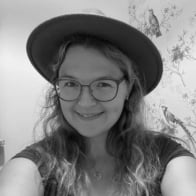Potential Difference
Potential Difference
- A cell makes one end of the circuit positive and the other negative
- This sets up a potential difference across the circuit
- This is sometimes known as the voltage
- The potential difference is defined as the work done per unit charge and is measured in units of volts (V)

Measuring Voltage
- Potential difference (or voltage) is measured using a voltmeter
- A voltmeter is always set up in parallel to (also called 'across') the component being measured
- Potential difference across components in parallel is always the same due to conservation of energy

Potential difference can be measured by connecting a voltmeter in parallel between two points in a circuit
Worked example
A resistor is connected to a battery which provides a potential difference of 10 V.
Calculate the work done when a charge of 2 C passes through the resistor.
Step 1: Write down the known quantities
-
- Potential difference, V = 10 V
- Charge, Q = 2 C
Step 2: Write down the equation relating potential difference, work done and charge
Step 3: Rearrange the equation to make work done the subject
Step 4: Substitute in the values and calculate W
Exam Tip
Think of potential difference as being the energy per coulomb of charge transferred between two points in a circuit

